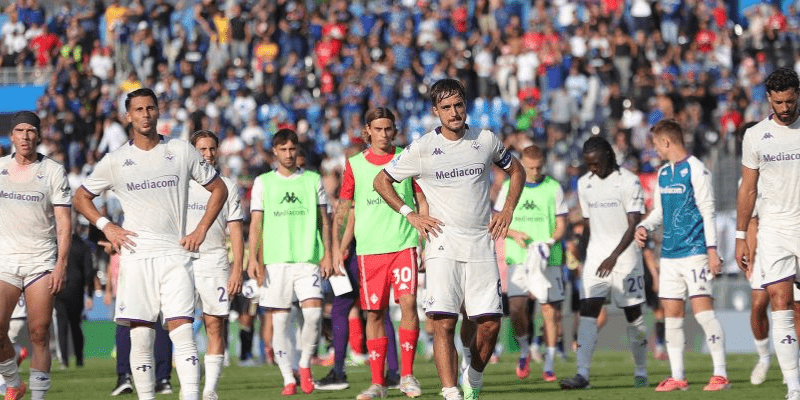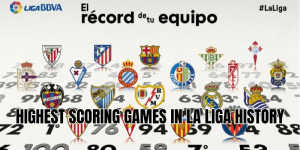In the breathtaking theater of Italian football, tactical trends in modern Serie A are rewriting the script. Gone are the days when rigid formations and ultra-conservative defence defined the league. Today, Serie A is pulsating with high-pressing rhythms, tactical flexibility, and daring transitions. In this article, DaoKick will accompany you to explore how the tactical DNA of Italy’s top flight is evolving—and why fans and analysts must pay attention.
From Catenaccio To Evolution: The Tactical Roots

Before we dissect present-day patterns, we must pay homage to the roots. Italy’s tactical identity was long anchored in catenaccio—a system emphasizing defensive compactness, man-marking, a libero (sweeper), and quick counter-attacks. This approach delivered trophies and became a defensive benchmark globally. (Indeed, catenaccio literally means “door-bolt.”)
But over time, the rigid man-marking of old gave way to zona mista—a hybrid zone-marking, positional fluidity, and stronger transitions mentality. Teams began to shift roles mid-match, rely less on fixed structures, and adjust to opponents dynamically. The seeds of versatility and spatial play were sown, and with the globalization of football, Serie A began absorbing influences.
This tactical lineage matters: many modern developments in Italian football are conversations with the past—sometimes embracing, sometimes rebelling, but always in dialogue.
The New Wave: Key Tactical Patterns In Serie A

Let’s dig into the core tactical trends in modern Serie A—the patterns that are shaping how Italy’s top clubs play, win, and evolve.
High Pressing & Counterpressing
One of the clearest shifts is the adoption of high-intensity pressing. Modern Italian coaches increasingly demand that teams win the ball quickly or punish errors close to opposition territory. This is a radical departure. The aim: force turnovers in dangerous zones and destabilize opposition build-up.
Counterpressing (the “Gegenpress” idea) has filtered in, too—teams now try to recover possession immediately after losing it, rather than dropping into fallback shapes. This is especially evident in mid-block zones or transitional moments.
Fluid Formations & Tactical Flexibility
Rigid 4-4-2 or 3-5-2 setups are becoming rare as teams adopt shape-shifting systems. Coaches frequently switch mid-game between back threes, fours, or even asymmetrical lines to exploit weaknesses.
Common formations now include:
- 3-4-2-1 or 3-4-1-2 (with wing-backs morphing into wide attackers)
- 4-3-3 with inverted full-backs
- 4-2-3-1 with overloads in half-spaces
Yet the formation label often belies the tactical nuance. The same “3-5-2” can play as a back five or morph into a back three, depending on the phase.
Vertical Transitions & Line-Breaking Passes
Possession for possession’s sake is no longer sufficient. Modern Serie A teams increasingly prioritize verticality—the moment to break lines is seized rather than postponed. Through passes that cut between defensive lines and dynamic runs are prized. This is especially visible in transitions: a team regains the ball and immediately looks forward, often bypassing several lines in one or two passes.
Line-breaking passes are now one of the most prized metrics in tactical analysis—a measure of how often a team can disrupt defensive structure with vision and precision.
Inverted Full-backs & Overlapping Wings
Wide play has become more sophisticated. Full-backs or wing-backs often invert into midfield zones when possession is organized, helping overload central areas. Meanwhile, overlapping runs still exist—but they are better linked with inside forwards or half-space runners.
These overlapping/inverted hybrid roles force defenders to make difficult decisions: stay wide, track the run, or get pulled into pockets—each choice can open holes.
Compact Defensive Blocks with Aggressive Triggers
Even as teams push forward more, defensive discipline remains central. Modern Serie A sides maintain compact defensive blocks, reducing vertical space for opponents. But now the block is not static; it has triggers—moments when defenders step out, press, or shift aggressively.
In short, the defense is zonal, patient, but opportunistic—a blend of solidity and aggression.
Set-Piece Innovation & Small Margins
With open-play spaces narrowing, set-pieces have become a decisive battleground. Clubs employ better routines, decoy runs, mixed movements, and hybrid zonal-man marking systems. Serie A teams are investing tactical time into corners and free-kicks like never before. These marginal gains can tilt major matches.
Club Illustrations: Who’s Doing What

To make these trends tangible, let’s examine how top Serie A clubs put them into practice.
Napoli Under Stability & Evolution
Napoli, under Antonio Conte’s stewardship, combine structural discipline with attacking fluidity. Their press is punctual, often triggering in midfield zones. The team is comfortable in possession or transition—able to shift shapes, overload, and deliver line-breaking passes. Their success suggests that tactical consistency plus modern evolution is a potent formula.
Atalanta: The Innovation Factory
Atalanta has long been the tactical laboratory of Serie A. They embrace overlapping full-backs, positional rotations, and vertical attacks. Their forwards and midfielders often occupy half-spaces, forcing opposition to stretch. In transitions, Atalanta are ruthless—winning balls and immediately attacking on the blind side.
Juventus’ Tactical Reboot Under Tudor
Juventus’ appointment of Igor Tudor signaled a tactical revamp. He speaks of balance, attacking intent, and the need to evolve quickly. The Juve rebuild includes a blend of compact defence and shar.
Elsewhere in the League
- Milan and Inter both flirt with shape-shifts and hybrid full-back roles depending on opponent.
- Mid-table clubs increasingly adopt pressing schemes and counterpressing to punch above weight.
- Promoted teams experiment with disciplined structure + fast transitions to survive.
Challenges & Constraints
No evolution is without friction. Several hurdles complicate the tactical overhaul:
- Player adaptation: Shifting.
- Fitness demands: High pressing, counterpressing, and transitions require extreme physical and tactical conditioning. Teams must manage load carefully.
- Game control vs risk: Pushing for transitions and inverted full-backs opens vulnerability to counters. Balancing risk and structure remains delicate.
- Consistency: Some coaches attempt radical systems but revert when results dip. Tactical identity needs continuity to flourish.
What Fans Should Watch For
If you’re watching a Serie A match in 2025 and beyond, here are what to look out for:
- How often a team presses high and where (midfield, backline, wide zones)
- Inversion of full-backs vs wide overlapping runs
- Line-breaking passes and vertical transitions after turnover
- Shape-shifts during matches—are formations rigid or fluid?
- Set-piece routines and defensive organization in dead-ball situations
These tactical signals often decide battles behind goals and stars.
Final Thoughts
Tactical trends in modern Serie A are a thrilling intersection of heritage and innovation. The league has moved. Teams now must be adept in multiple phases—attack, defence, and recovery—with flexibility as a baseline trait.
For you, the passionate fan, that means more drama, nuance, and tactical intrigue to absorb. Keep your eyes on those inverted full-backs, those daring line-breakers, and how coaches tweak shape mid-game.
If you want match-by-match tactical breakdowns, player-specific strategies, or comparisons with other leagues’ trends, DaoKick is ready to explore with you.



